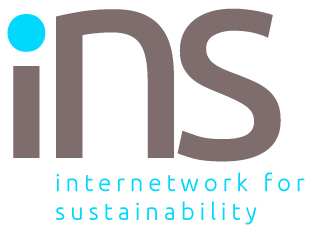The threat of a new pandemic, caused by a novel virus or disease X, is real. A combination of global factors creates an environment conducive to the emergence and spread of infectious diseases. These factors include ecological, societal, and geopolitical drivers, which are increasingly interconnected. According to the World Health Organization (WHO), it is not a question of if but when it strikes.
The next pandemic could emerge from a novel Disease X or result from known pathogens mutating and re-emerging. Scientists believe it is most likely to originate from one of approximately 25 virus families already known to infect humans. Emerging infectious diseases often originate from animals, and environmental changes are heightening the risk. While the exact timing and location of the next outbreak are unpredictable, experts agree that another Disease X will eventually spill over into humans.
What is disease X?
Disease X is a hypothetical concept representing an unknown pathogen with the potential to cause a severe international epidemic or pandemic. While it does not currently exist, it symbolizes an increasing threat to global health.
Ecological Drivers
Climate change, deforestation, and urbanization are major contributors to pandemic risk. Deforestation and the expansion of agricultural activities bring humans into closer contact with wildlife, increasing the likelihood of zoonotic diseases—pathogens jumping from animals to humans. Urbanization amplifies this risk by concentrating populations in dense areas where diseases can spread rapidly. Additionally, climate change exacerbates the situation by altering ecosystems and enabling pathogens to thrive in new regions.
Societal Factors
Globalization and increased travel facilitate the rapid spread of pathogens across borders. Social distancing measures during COVID-19 temporarily suppressed the natural circulation of pathogens, but this pause may have created vulnerabilities to future outbreaks. Vaccine uptake has also declined globally, partly due to supply chain disruptions and rising anti-vaccination sentiment. This trend undermines herd immunity and increases susceptibility to preventable diseases like measles, which has seen resurgences in several regions.
Geopolitical Fragmentation
The current geopolitical climate hinders coordinated pandemic preparedness. Conflicts, such as those in Ukraine and the Middle East, divert resources and attention away from global health initiatives. Geopolitical tensions also disrupt international cooperation, making it harder to implement unified strategies for disease surveillance, prevention, and response.
Emerging Pathogens
New diseases like mpox and Marburg virus, along with re-emerging threats such as avian influenza H5N1, highlight the evolving nature of pandemic risks. Pathogens with high transmissibility but moderate lethality, like SARS-CoV-2 (which caused Covid), are particularly concerning because they can spread widely before detection.
Climate Change’s Role
Activities driving climate change—deforestation, livestock farming, and pollution—also increase pandemic risks. These practices destabilize ecosystems and intensify human-animal interactions. A “One Health” approach that integrates human health, animal health, and environmental sustainability is essential for mitigating these risks.
Efforts to mitigate these risks focus on researching viral families, developing broad-spectrum medical countermeasures like adaptable vaccines, and strengthening global surveillance systems.
Pandemic Preparedness
Despite advancements, the world remains unprepared for future pandemics. The COVID-19 crisis exposed weaknesses in global health security, like inadequate assessment tools. The Global Health Security (GHS) index failed to predict national responses accurately, highlighting the need for better evaluation methods.
Global readiness was spread unevenly. No country was fully prepared for COVID-19, as later confirmed by post-pandemic assessments. We also experienced a lack of coordinated leadership. There is no unified global mechanism to coordinate political responses to pandemics.
Recent Initiatives and Ongoing Challenges
Recognizing that new health crises will emerge, the WHO insists there is no excuse for the world not to be ready. In response, various global initiatives are underway to strengthen pandemic preparedness, focusing on surveillance, response capabilities, and international collaboration.
The Global Preparedness Monitoring Board (GPMB) has called for updated pandemic plans to address evolving risks, including increased travel and climate change. Countries are actively revising their preparedness strategies and conducting simulation exercises through the Pandemic Preparedness and Response (PRET) initiative. Organizations such as the Pan American Health Organization (PAHO) are enhancing genomic surveillance and laboratory capacities to improve outbreak detection and response. Another significant effort, the 100 Days Mission, aims to ensure that diagnostics, treatments, and vaccines are available within 100 days of a new outbreak.
Despite these efforts, significant challenges remain. Securing sustainable financing for pandemic preparedness remains a major hurdle, while equitable access to medical resources remains uneven across different regions. Regulatory frameworks require greater harmonization to ensure coordinated responses, and biosafety measures must be strengthened to prevent accidental or deliberate biological threats. The upcoming pandemic agreement negotiations (INB13) in 2025 could be crucial in addressing these gaps and advancing global preparedness for future health crises.
The WHO is also actively working towards a global pandemic accord, expected to be finalized by 2025, to enhance international cooperation and coordination before and during pandemics. The organization advocates for a comprehensive threefold approach to pandemic preparedness: adapting to new risks, protecting vulnerable populations, and connecting nations through collaborative strategies. As part of this effort, the WHO is promoting the One Health approach, which acknowledges the interconnectedness of human, animal, and environmental health in pandemic prevention. Strengthening core capacities required by the International Health Regulations (IHR) is another priority, as these regulations provide the foundation for pandemic response.
However, prevention remains a crucial component of the WHO’s strategy. Addressing factors that contribute to zoonotic transmission, such as environmental degradation and wildlife trade, is essential to reducing the risk of future pandemics at their source.
Multi-disciplinary Action
The convergence of ecological disruption, societal vulnerabilities, and geopolitical challenges underscores the urgency of robust pandemic preparedness. Governments must prioritize strategies that address these interconnected drivers while fostering international cooperation to reduce the likelihood and impact of future pandemics.
Given the present geopolitical situation, action is more urgent than ever. Simultaneously, the chance of it being taken has decreased for quite some time.









